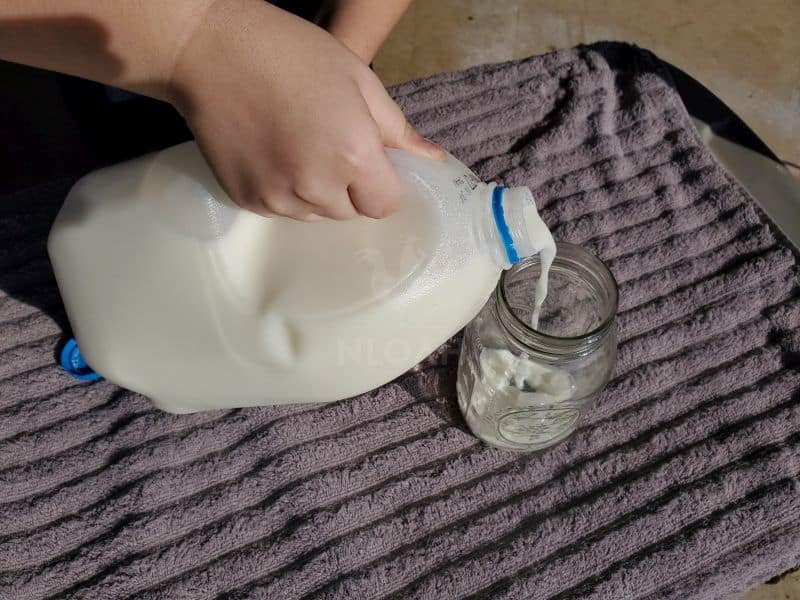Usually, when we think of milk, we think of supermarkets, plastic bottles, or cardboard cartons. We also typically think of pasteurized milk, not the raw, unpasteurized milk that comes straight from the cow. This begs the question: is it good for you?
No, raw milk is not good for you. While it does have a high-fat content, and there are some benefits attributed to it, there’s little evidence to prove them. Additionally, the lack of treatment to annihilate bacteria makes raw milk risky.
There’s a lot of conflicting information about raw milk, but most of it is negative, so let’s talk about that.

What is Raw Milk and What is it Good For?
Raw milk is milk that hasn’t been pasteurized / processed to get rid of bacteria. The truth is that it’s not really good for much. There are claims that it has a nicer flavor and improves/strengthens your immune system. Additional claimed benefits include:
- Allergy reduction
- Improved skin health
- Improved digestion
- Increased bone density
- Nutrient absorption
It has a high-fat content which supports the nervous system and improves bone density. Raw milk is also high in omega-3 fatty acids and conjugated linoleic acid which help with, among other things, issues related to inflammation and cholesterol.
With all that said, the medical community has warned of serious risks regarding the consumption of raw milk, and as such it’s heavily regulated.
Health Risks Related to Raw Milk
As far as health risks go, the biggest problem to worry about is bacteria. The presence of bacteria puts you at risk of infection and can mean either hospitalization with severe consequences. Some of the germs / bacteria include Salmonella and E. coli.
Infants, pregnant women, and those with weakened immune systems are advised against drinking raw milk as they are more susceptible to illness/infection.
It’s important to note, however, that there’s a lot of conflicting information on the web related to the subject of raw milk.
Unfortunately, the bulk of the information is negative – the CDC makes the idea of illness and/or death sound almost imminent or at least frequent, although the numbers of infections and deaths are very low.
There is an idea that you can avoid infection if the cows from which the milk is collected are healthy and in sanitary conditions. This is, in fact, a misconception.
There’s no such thing as 100% clean (although sanitary conditions do reduce the risk somewhat), raw milk can still be easily contaminated – even if your cows are healthy and their living conditions are sanitary. Contamination may occur in the milking process or through cross-contamination by contact with workers, and exposure to other animals.
Legal Status in the USA
The sale of raw milk is legal in 30 of the 50 states of the USA, but the sales are often restricted to sales from farms, meaning you won’t find it in retail stores very often.
The states in which the sale of raw milk is legal are:
| Arizona | Connecticut |
| California | Idaho |
| Maine | Nevada |
| New Hampshire | New Mexico |
| Pennsylvania | South Carolina |
| Washington | Utah |
| Oregon | Arkansas |
| Illinois | Kansas |
| Texas | Minnesota |
| New York | Oklahoma |
| Wisconsin | Wyoming |
| Missouri | South Dakota |
| Vermont | Mississippi |
| Kentucky | Rhode Island |
| Massachusetts | Nebraska |
Each state will, of course, have its own rules regarding how and where you can purchase raw milk.
In Closing
To summarize:
- There are a lot of information and opinions about whether raw milk is good or not. The overwhelming majority and the general consensus of the medical community is that raw milk is bad for you.
- Raw milk is highly susceptible to contamination and carries a host of germs and bacteria which can cause severe illness.
- The sale of raw milk is only legal in 30 of the 50 states and is heavily regulated.
So, in closing, I’d like to say that I hope you enjoyed this article and found it informative. As always, thanks for reading, and I’ll see you next time. Take care!

Greg is a South African farmer and homesteader who’s been around animals ever since he can remember. He’s also an avid camper and hiker.
